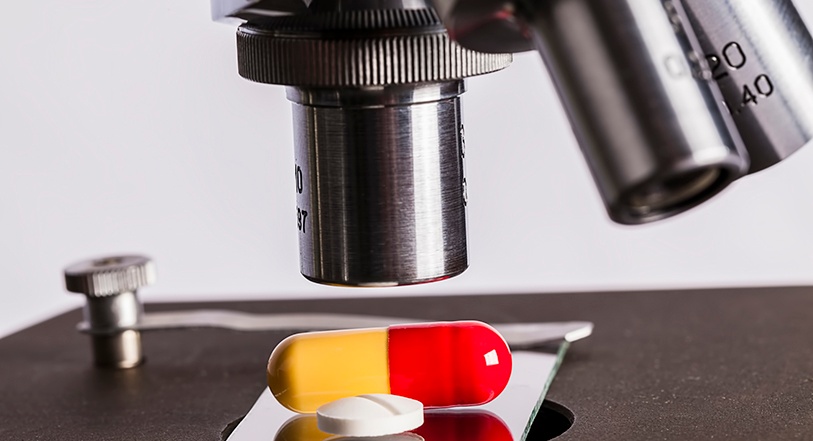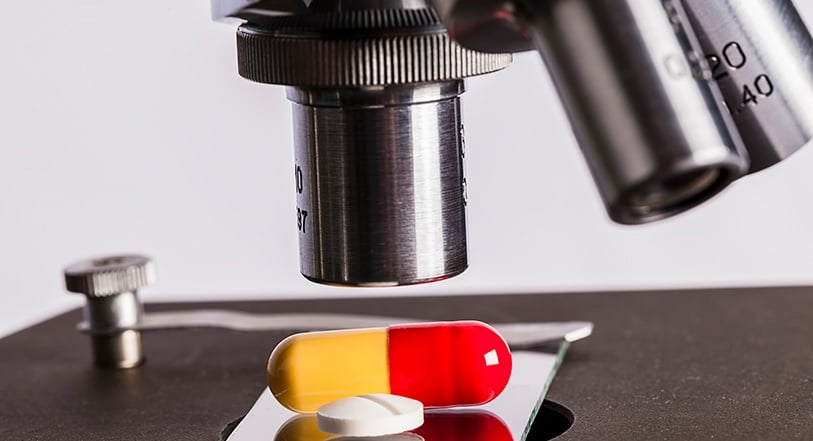
The entire drug discovery process can be a long and arduous road; each step provides a crucial contribution to the final goal, which is safely and effectively treating patients with an FDA-approved drug. The preclinical phase relies significantly on high quality histotechnology, which comprises the cornerstone of safety and efficacy studies, therefore influencing all further phases of development for the test compound.
The path to drug discovery includes the following:
1. Discovery
Basic science researchers are continuously working to understand various diseases and the biological mechanisms underlying their progression. When a discovery is made in this realm, it is generally subject to rigorous peer review and repeat testing before it becomes an accepted explanation of disease and target for treatment. These discoveries are mediated by several factors including new insights into already well-researched diseases; high throughput screenings of molecular compounds for a large number of diseases; the emergence of new technologies that allow for more accurate assessment of the biological underpinning of diseases or that allow for new ways to target specific sites in the body or manipulate genes.
Once a mechanism and site of action is identified for a particular disease, thousands of potential candidate drugs may be screened before identifying a few compounds that look promising and call for more studies.
2. Preclinical Research
Prior to clinical testing, it is essential to determine the toxicity of a drug. FDA requires that researchers use Good Laboratory Practices (GLP) to conduct these preclinical studies in animals. Basic requirements for conducting the study, training personnel, facilities and equipment, protocols, standard operating procedures (SOPs), study reports and archiving of study materials are specifically outlined by these regulations. Non-adherence to any of these stipulated conditions can lead to disqualification of the facility by FDA and ultimately the termination of your study.
Preclinical studies must be detailed and highly specific in their report of dosing and toxicity. There is an FDA review after preclinical testing which will determine whether the drug will proceed to clinical testing. Much of the information that is required to gain FDA’s approval at this stage is directly reliant on the histopathology that is conducted. Requirements include: safety pharmacology studies, general toxicity studies, toxicokinetic and pharmacokinetic studies, reproduction toxicity studies, genotoxicity studies, carcinogenicity, teratogenicity, mutagenicity, etc.
These data must be of the highest quality, as they comprise a pivotal point in the drug development process: determining whether this particular compound of interest will be tested in humans.
3. Clinical Research
Once the basic questions about a drug’s safety have been answered in the preclinical arena, it is time to determine how the test compound interacts with human biology. Researchers design the clinical study based on results obtained in animals and initiate the Investigational New Drug (IND) process, which will allow them to continue their work in human trials.
The clinical phases of research are listed below:
Phase I
Phase I trials are small-scale studies designed to determine the safety and proper dosage in humans. These studies typically enroll 20-80 subjects and take 1 year.
Phase II
The next phase is larger, usually enrolling between 100-300 subjects and, while continuing to primarily look at safety, begins to determine efficacy of the test compound over about 2 years. At this stage in development, researchers will also be looking for any unidentified adverse effects from the drug.
Phase III
From 1,000-3,000 subjects will typically be treated with the compound and experimenters are looking for more long-term adverse effects (up to ~3 years) that may arise as well as new effects in the more diverse study population.
FDA review/approval
After completion of the preclinical and clinical phases of study described above, researchers file a New Drug Application (NDA), which FDA reviews and can ask for additional studies or information and ultimately will deny or approve. This process can take from several months to several years.
Phase IV
These post-market studies are conducted after approval and continue to provide vital information on the safety and efficacy of the drug in a much larger and more diverse population of patients.
Because of the substantial cost and time invested in the drug development process, investigators need to ensure that they are conducting each step as carefully and accurately as possible so as not to make a crucial mistake that puts people’s lives at risk and wastes millions of dollars and years in valuable research time.
Concerned about GLP compliance or the quality of your histotechnology at the preclinical phase of drug development?? Try outsourcing to an expert partner today!

